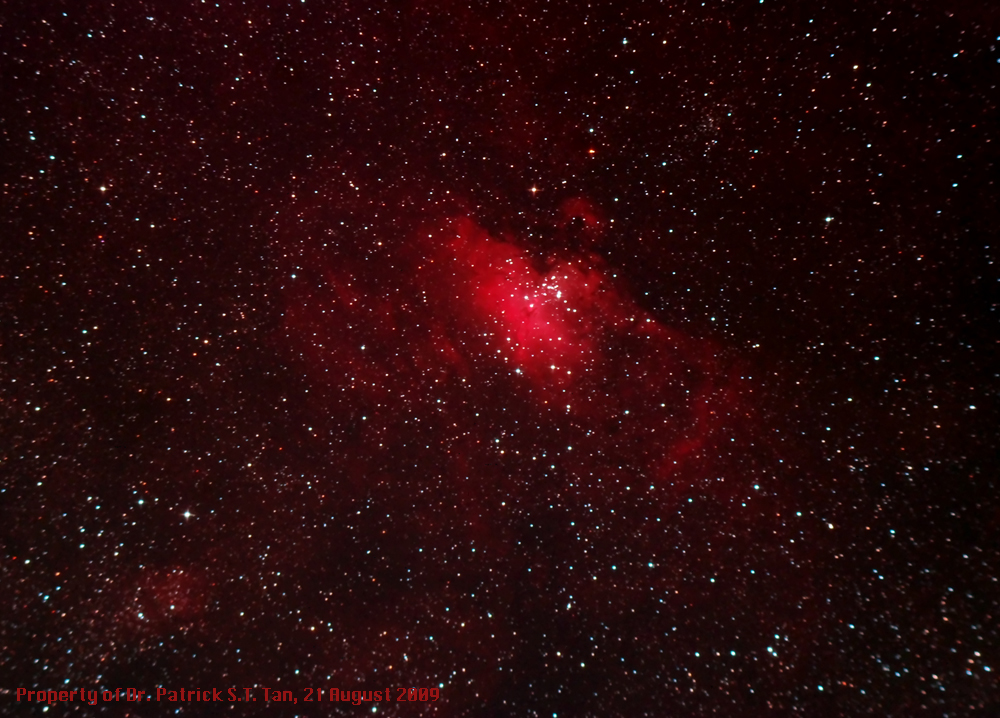M16: Eagle Nebula
Date: 21/08/09 Time: 2200hrs Location: Sunningwell Temperature: 14.8ºC Relative Humidity: 73%
Camera: Nikon D80 Scope: William Optics Z66 Apo Doublet at prime focus Mount: piggy-backed on Meade LX90 in equatorial mode Filter: Astronomik CLS (LPF broadband filter) Exposures: 5x10min ISO: 1600 F ratio: 5.9 Guidance: Autoguided
The night after I took the Trifid Nebula picture was clear as well, the moon was still very new - a sliver chasing the setting sun in the west - and the southern horizon remained clear. With greater elevation in Serpens Cauda (18hrs 18min 48sec RA, -13deg 48min Dec) I was grateful for the slightly less atmospheric density giving less light pollution to filter away during processing. This HII emission nebula is the home of the 'Pillars of Creation' seen in breathtakingly high resolution in the famous photographs taken by Hubble. This widefield, midtone enhanced image lost the resolution of the central 'pillars' but you may see this (surprisingly) in my early Meade DSI images of the centre of this nebula on this LINK. The Eagle Nebula is about 9000 light years away and was first described by Philippe Loys de Chéseaux, a wealthy landowner with a private observatory in Lausanne in 1746 before Messier gave it his designation.
I originally had over an hour's worth of 10min exposures but had to reject 3 due to aircraft flying right through the target field (I live in the south of England which is one of the busiest skies in Europe, even in the dead of night, apparently.) Needless to say I was livid about this - my neighbours have to cope with the sound of an hysterical foul-mouthed madman shouting expletives suddenly in the dead of night - apologies to all within earshot, including Ossie the Doberman. Having selected the unspoilt exposures, I had 50min of cumulative exposure time, stacked in MaximDL, light pollution subtracted in Photoshop CS, which was also used to set black and white points and enhance the midtones. Finally, a single pass of Noise Ninja at the default settings was applied before cropping. The 'eagle-eyed' among you will have noticed that the brighter stars in my latest two pictures have diffraction spikes - I made myself a cross-hair attachment for the refractor to aid focussing of the Nikon. It makes the stars pretty too!
HOME PICTURES: Solar system PICTURES: Wide field
